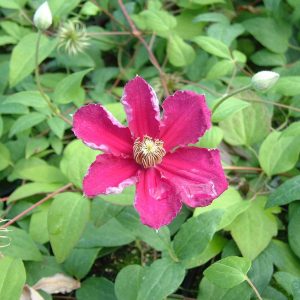Description
Gaillardia, also known as blanket flowers, are herbaceous perennials with colorful, daisy-like flowers that bloom from summer to fall. They come in a range of colors, including yellow, orange, red, and bi-colors, with some varieties having dark centers. Gaillardia plants have a bushy habit, making them a great addition to cottage gardens or mixed borders. They prefer full sun and well-drained soil, and can tolerate some drought once established. Companion plants for gaillardia include other sun-loving perennials such as coneflowers, black-eyed susans, and salvia.
Key Facts
- Common Name(s):Blanketflower ‘Arizona Red Shades’
- Hardiness:Fully hardy
- How big will I get? Gaillardia x grandiflora ‘Arizona Red Shades’ can grow to a height of 0.3m and a spread of 0.3m.
- Did You Know That:The common name Blanket flower is thought to come from the colours of the flower being similar to those used in the blankets made by Native Americans?
Plant Calendar
A rough guide to how this plant will change through the year.
| Jan | Feb | Mar | Apr | May | June | July | Aug | Sept | Oct | Nov | Dec | |
| Flowering Time |  |
 |
 |
 |
||||||||
| Foliage Colour |  |
 |
 |
 |
 |
 |
 |
 |
 |
| J | F | M | A | M | J | J | A | S | O | N | D |
 |
 |
 |
 |
||||||||
 |
 |
 |
 |
 |
 |
 |
 |
 |
Care Guide

Soil Requirements
Gaillardia x grandiflora ‘Arizona Red Shades’ prefers soil with good drainage and does not tolerate standing water. This plant can grow in soil with a wide range of pH levels, it is not picky about the pH level of the soil.

Best Position
Gaillardia x grandiflora ‘Arizona Red Shades’ can handle either an exposed or a sheltered position and requires full sun to thrive, this consists of more than six hours of direct sunshine per day.

Maintenance
Gaillardia x grandiflora ‘Arizona Red Shades’ should be deadheaded regularly to promote the production of new flowers, it can then be cut back hard once the flowering period is over, this will help to promote plenty of fresh growth the following Spring.

Pest, Diseases and Wildlife
Gaillardia x grandiflora ‘Arizona Red Shades’ is generally pest free, it can be vulnerable to certain diseases such as downy mildew. It is also known to attract bees, birds and butterflies. It is not considered to be toxic.





